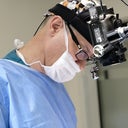The bumps we see on the 3/4 views, and the width of the upper part of the nose on the frontal view, indicate that the nasal bones probably have not been narrowed, or the attempt wasn't successful. Also the 3/4 views, to my eye, make the nose look long-ish. More swelling will go down in the next 5 months, but at this point you're done with 80-90% of the swelling, so the change won't be dramatic. You might be considering a revision, if the nose is far from your original ideal goal.





